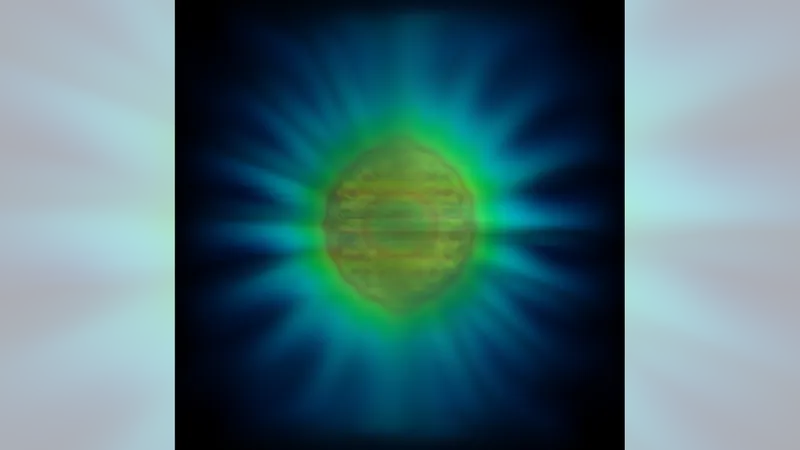
NASA's Webb Telescope Reveals Shocking Truths About the Universe's Expansion!
2024-11-29
Author: Ken Lee
For decades, scientists have battled one of the most profound mysteries of the cosmos: the rate at which our universe is expanding. This pivotal measure, known as the Hubble constant, impacts everything from galaxy formation to our understanding of the universe's fate. Recent developments suggest that everything we thought we knew might be alarmingly incorrect.
The Hubble Tension: A Cosmic Puzzle
Despite the brilliance of countless scientists, resolving the Hubble Tension has proven elusive. Adam Riess, a Nobel laureate and physicist at Johns Hopkins University, admits, "With measurement errors negated, what remains is the real and exciting possibility that we have misunderstood the universe." Riess played a crucial role in unveiling that dark energy is accelerating the universe's expansion, and now he’s involved in tackling the ongoing Hubble Tension.
Why is the Hubble Constant So Important?
The Hubble constant, named after astronomer Edwin Hubble, allows us to map out cosmic history and predict the future of the universe. When the Hubble Space Telescope launched in 1990, one of its primary missions was to refine measurements of this constant. Earlier estimates of the universe's age fluctuated wildly between 10 and 20 billion years. However, thanks to Hubble's observations of Cepheid variable stars, we now have a more precise age of approximately 13.8 billion years.
Enter the Webb Telescope
In hopes of clarifying the mystery, scientists turned to the James Webb Space Telescope (Webb), which has been heralded as a groundbreaking successor to Hubble. Webb leveraged infrared observations to measure Cepheids, aligning perfectly with Hubble's optical data. Yet, the discord between local and distant measurements continues to baffle researchers.
While both the Hubble and Webb telescopes continue to corroborate one perspective on the Hubble constant, observations from the early universe, like those from the Planck satellite, present a conflicting perspective. This discrepancy leaves cosmologists questioning the very fabric of space: Are there hidden physics waiting to be uncovered?
A New Approach: Gravitational Lensing
Pioneering a different method, Brenda Frye from the University of Arizona, along with her international team, utilized gravitationally lensed supernovae to independently measure the Hubble constant. They stumbled upon a Type Ia supernova, an extraordinary explosion of a white dwarf, whose light was amplified and fragmented by a galaxy cluster’s gravitational pull. This allowed them to measure the time delays between visual impressions of the supernova, yielding a Hubble constant measurement of 75.4 kilometers per second per megaparsec. This aligns with local measurements, further intensifying the mystery.
The Ongoing Quest for Answers
Where do we go from here? The Hubble Tension signals that a new understanding of physics could be on the horizon. Perhaps it's time to revisit our concepts of dark energy, dark matter, or even consider the possibility of new particles influencing expansion rates. The universe might not be uniform across vast distances, leading to variations that we’ve yet to fully account for.
Is our perception flawed? Could there be cosmic phenomena hidden in plain sight, waiting to be discovered even within Earth's bounds? The challenges seem daunting, yet they invigorate the scientific community to probe deeper.
The Universe’s Secrets Remain Unsolved
In conclusion, a captivating and frustrating truth emerges: the universe continues to hold its secrets tightly. Despite significant advancements courtesy of the Webb and Hubble telescopes, scientists are still left grappling with the implications of the Hubble Tension. Each new measurement brings fresh excitement but also deepens our understanding of what remains unknown.
With future missions like NASA’s Nancy Grace Roman Space Telescope and ESA’s Euclid mission on the horizon, the quest for discovery is far from over. The universe remains an ever-expanding enigma—full of chaos, beauty, and surprises just waiting to be unveiled. Buckle in, because the cosmic ride is only getting started!



 Brasil (PT)
Brasil (PT)
 Canada (EN)
Canada (EN)
 Chile (ES)
Chile (ES)
 España (ES)
España (ES)
 France (FR)
France (FR)
 Hong Kong (EN)
Hong Kong (EN)
 Italia (IT)
Italia (IT)
 日本 (JA)
日本 (JA)
 Magyarország (HU)
Magyarország (HU)
 Norge (NO)
Norge (NO)
 Polska (PL)
Polska (PL)
 Schweiz (DE)
Schweiz (DE)
 Singapore (EN)
Singapore (EN)
 Sverige (SV)
Sverige (SV)
 Suomi (FI)
Suomi (FI)
 Türkiye (TR)
Türkiye (TR)